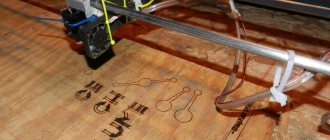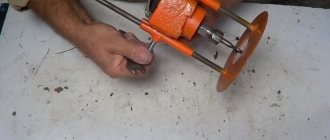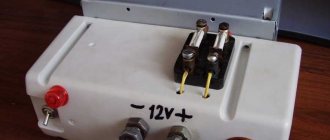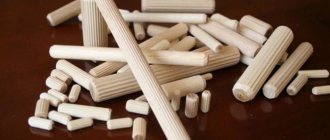Modern society cannot imagine its life without automobile technology. As the number of cars increases, the number of worn tires in the world also increases proportionally. Machines for processing tires into crumbs are not able to cope with such a volume of rubber waste.
As a result, an alternative method was developed in which car tires undergo a process of separation into useful elements. This method is called pyrolysis.
How does pyrolysis of tires occur?
Pyrolysis processing of tires proceeds in three stages:
- First of all, the tires are cut into the front and side parts with special knives. Then they are placed in a sealed container (retort) and sent to a heated oven.
- When heated to 1000 degrees, the rubber material deforms, it decomposes, and at the same time gas is released. Pyrolysis differs from other processing processes in that the process occurs without the supply of oxygen. After decomposition is complete, the container is removed and replaced with another.
- At the third stage, the raw material cools down over a long period of time, and then is divided into metal cord and carbon residue. Tire pyrolysis is a waste-free rubber processing process; all the resulting secondary raw materials are successfully used in various types of industry, for example, in oil production and bring good profits.
Is it possible to make the equipment yourself?
You can install a system for treating tires with pyrolysis yourself. The main elements of such an installation are metal pipes of different diameters. To control the flow of fuel, valves and taps are needed. To monitor the processes occurring inside the system, thermometers are installed. To make the combustion chamber, you can use a 200 liter metal barrel, and the retort will be a can, which is modified with airtight connections.
Such equipment will work at the household level. But for subsequent processing of raw materials, additional equipment is required, and the economic benefit is also unlikely to be noticeable, since the volume of processed tires is small. To obtain good fuel from tires, it is worth using ready-made pyrolysis equipment created by production specialists. Such units have the following additional devices:
- scrubber - with the help of chemicals, the gas obtained during pyrolysis is cooled, its partial condensation occurs;
- to reduce the percentage of humidity, the gas mixture is passed through a separator before being fed into the furnace;
- the gaseous mass is finally converted into liquid in the condenser;
- To prevent harmful substances formed during combustion from polluting the atmosphere, filters are installed.
You may also like: Waste certification
Oven operation
The operating method of an industrial pyrolysis plant for processing rubber products and tires involves several main production stages:
- Preparation of material for its further decomposition in a retort.
- The resulting raw material during pyrolysis is fed into a device for cooling and partial condensation of the pyrolysis gas.
- When passing through the condensing pipeline, the final separation into liquid and gaseous components occurs.
- When the remaining gas is dried, it is supplied for further combustion in a furnace.
Large processing plants use additional catalyst units in the rubber decomposition process.
In such equipment, pyrolysis raw materials are distilled into various fuels; these installations require large areas and sufficient funding.
In our country, the method of technological rubber processing is not yet widely used, but worthy examples of domestically produced plants are available on the market.
Advantages of tire pyrolysis
This method is used in a wide variety of industrial sectors: mechanical engineering, petrochemistry, paper production. Why is this method better than others?
Firstly, the damage caused to natural ecosystems is minimal compared to the results of burning rubber goods.
Secondly, this process is practically waste-free, very effective and low-cost in terms of energy. The equipment consumes very little electricity. Everything that is formed as a result of pyrolysis does not require additional processing and is successfully used in industry.
Thirdly, this method is universal, allowing you to transform different raw materials.
And fourth, as a result, new fuel and raw materials are obtained. During pyrolysis processing, the system can provide itself with fuel independently.
Implementation issue
Let's face it, retail is not suitable for this business. The entrepreneur will have to look for wholesale buyers. The implementation process is also complicated by the specificity of the components that are obtained as a result of processing. Sending commercial offers to enterprises, participating in specialized exhibitions, and personal negotiations will help you reach buyers.
It is extremely important to immediately discuss with customers the volumes of products they will require. For many customers, it is enough to contact you once a year. Of course, the products of a tire processing plant are not perishable, but the lack of sales markets will significantly slow down your business. Additionally, you will still have to look for warehouses to store it.
Pyrolysis tire recycling
Pyrolysis of tires can become a very profitable business if everything is agreed upon in advance with environmental services. Pyrolysis allows you to recycle almost any waste. Huge landfills of used tires pose a lot of danger and harm, which is why they are banned in Europe.
The issue of rubber recycling should be resolved at the highest levels of government. France burns some of its tires, some is recycled into crumbs, and the rest is recycled. And in America, used tires are used to produce diesel fuel. It is through the pyrolysis recycling of tires that fuel liquid is obtained.
Prices and characteristics of pyrolysis plants with a capacity from 4 to 20 tons
| № | Name | Power, kWt. | Reactor volume m3/hour | Load capacity tons. | Volume per day tons. | Number of downloads per day | Price* $ USA | Price** $ USA | Price*** $ USA | Price **** $ USA | Price***** $ USA |
| 1 | -2200-6000 | 11 | 22 | 5 — 6 | 8 — 10 | 3 in 2 days | 87000 | 102000 | 115000 | 128000 | 149000 |
| 2 | -2200-6000 | 11 | 22 | 5 -6 | 8 — 10 | 3 in 2 days | 99000 | 115000 | 128000 | 140000 | 161000 |
| 3 | -2200-6600 | 11 | 25 | 7 | 10 -11 | 3 in 2 days | 89000 | 104000 | 117000 | 130000 | 151000 |
| 4 | -2200-6600 | 11 | 25 | 7 | 10 -11 | 3 in 2 days | 101000 | 117000 | 130000 | 142000 | 163000 |
| 5 | -2600-6000 | 16 | 32 | 8 -10 | 8 -10 | 1 per day | 98000 | 115000 | 128000 | 141000 | 163000 |
| 6 | -2600-6000 | 16 | 35 | 8 — 10 | 8 -10 | 1 per day | 110000 | 127000 | 140000 | 153000 | 175000 |
| 7 | -2800-6000 | 17 | 37 | 10 -11 | 10 -11 | 1 per day | 111000 | 129000 | 143000 | 158000 | 182000 |
| 8 | -2800-6000 | 22 | 37 | 10 — 11 | 10 -11 | 1 per day | 124000 | 142000 | 156000 | 171000 | 195000 |
| 9 | -2800-6600 | 22 | 40 | 12 — 13 | 12 — 13 | 1 per day | 128000 | 149000 | 164000 | 180000 | 209000 |
| 10 | -2800-6600 | 22 | 40 | 12 -13 | 12 — 13 | 1 per day | 137000 | 180000 | 177000 | 193000 | 221000 |
| 11 | -2800-7500 | 22 | 46 | 15 — 16 | 15 — 16 | 1 per day | 143000 | 168000 | 184000 | 203000 | 229000 |
| 12 | -2800-7500 | 22 | 46 | 15 — 16 | 12 — 13 | 1 per day | 158000 | 184000 | 199000 | 219000 | 245000 |
* — Heating of the reactor of the installation with gas, coal or wood.
** — Heating of the reactor of the installation with multi-fuel burners operating on diesel fuel, pyrolysis oil, fuel oil.
*** Heating of the reactor of the installation with multi-fuel burners operating on diesel fuel, pyrolysis oil, fuel oil. Plus automated loading of the installation reactor
**** Fully automatic material loading and unloading system
***** — price of a pyrolysis unit with a cooling system adapted to cold climates, without an outdoor pool and a cooling system that allows the use of heat generated by the unit for heating the workshop. Supply ventilation system. Heating of the installation with multi-fuel burners operating on diesel fuel, pyrolysis oil, fuel oil.
Types of pyrolysis
Depending on how the processing process proceeds and what is obtained at the output, pyrolysis can be of different types.
- At low temperatures, up to 80% of coke residue - coal - is formed. This type of processing is called torrefaction.
- Slow pyrolysis (carbonization) takes a very long time and requires medium temperature.
- At 500 degree heating, so-called fast pyrolysis occurs. The raw material is in the oven for only about 5 seconds, and the result is a liquid, 70% of which is water.
- Gasification - with this pyrolysis at high temperatures, the amount of gas released is 50-70% more than other types of processing.
Liquid metal pyrolysis of used tires
One of the newest types of pyrolysis is a process where rubber is processed in molten lead. In addition to the usual products, the output produces a substance (limonene), which is further used as a solvent.
The advantage of such pyrolysis is that the molten metal is an excellent heat conductor. This allows you to reduce electricity costs by almost 200 times.
Dry pyrolysis and its varieties
There is a pyrolysis treatment that occurs without the addition of oxygen - dry pyrolysis, which occurs at different temperature conditions. To produce coal and resin needed in rubber production, dry pyrolysis occurs at 400-500 degrees.
As the degrees increase, more gas is produced. When the temperature is raised to 900 degrees, the result is solid or liquid raw materials. Dry pyrolysis allows you to disinfect the resulting product, as well as obtain fuel and various materials.
Oxidative pyrolysis
The cleanest environmentally friendly method for recycling tires is oxidative pyrolysis. With this treatment, petroleum products are disinfected, and the raw materials can be used in any form - plastic, rubber.
You may also like: How to properly dispose of batteries?
By-products self-destruct. This method does not require large economic costs and is therefore in demand in industry.
Types of pyrolysis by type of material burned
The variety of materials suitable for pyrolysis processing is very large. In Russia, in addition to plastic and tires, methane, wood, and carbon compounds become pyrolysis raw materials.
To convert methane into acetylene, it is necessary to use substances that catalyze the process at high temperatures. Trimerization of methane occurs in the presence of activated carbon and does not consume much energy. On the contrary, the production of acetylene initially requires high temperature.
Wood is processed at low temperatures. Pyrolysis of this raw material is practically waste-free and releases materials such as methanol, acetic acid, resins, and acetone.
The cracking method is used to refine carbon-containing compounds, resulting in the formation of benzene, ethylene and other hydrocarbon compounds.
Boiler design
The boiler used to burn tires is called a pyrolysis boiler. Its design includes a retort, combustion chamber and heat exchanger.
Retort
A retort is a high-temperature resistant crucible in which tires are placed during processing.
Combustion chamber
The process of pyrolysis and, accordingly, heating of the material occurs in the combustion chamber.
Heat exchanger
Another part of any pyrolysis boiler is used for cooling and subsequent condensation of gas into liquid fuel.
Benefits of tire pyrolysis
Recycling rubber goods using pyrolysis plants has advantages over other methods:
- the products of this method are not toxic or harmful, and therefore are not environmentally hazardous;
- pyrolysis - production without waste, everything that comes out in the end is then used in industry instead of recycled materials;
- this type of tire treatment is energy efficient;
Pyrolysis of auto waste is the only correct method that protects the environment, is beneficial for building a business and is cost-effective, allowing you to obtain secondary raw materials for creating other raw materials (energy, electricity).
The essence of the problem
In recent years, rhetoric has intensified and some legislation has appeared regarding concern for the environment and waste recycling, not only in the first world countries, but also in the vastness of Russia and the former USSR (for example, in Central Asia).
This is not surprising, because recycling of garbage and waste is the most pressing environmental, social and in some places political problem of the 21st century, and plastics and rubber are no exception. On the other hand, recycled materials are a valuable resource for industry in the context of high prices for mineral raw materials, which are becoming increasingly difficult to obtain. One of the most pressing and pressing issues in the field of secondary raw materials is the recycling of tires that have expired. From the point of view of the chemical composition, in addition to the rubber itself, tires contain sulfur oxides, zinc-containing chemicals and other not always useful compounds. If worn tires are simply burned, then when burned they can form combinations of harmful and toxic substances.
All over the world, processing enterprises are emerging that, using one technology or another, produce various raw materials from waste tires, but this is clearly not enough. The number of cars is constantly increasing, and with it the number of discarded tires is also growing. In the EU alone, their quantity is more than 2 million tons annually, of which, according to various sources, about 30 percent is processed. Needless to say, the situation in post-Soviet countries is even worse: in Russia, less than 17 percent of this material is recycled. Approximately the same number of tires are burned, polluting the atmosphere (see next chapter). The problem is that tire recycling is still not a very profitable enterprise.
Output products
The conditions under which pyrolysis occurs affect the final result of the treatment. The main products are gas, liquid, metal cord and coke residue. The intensive course of the pyrolysis process at medium temperatures causes the release of carbonaceous liquid.
This is synthetic oil, the composition is almost like natural oil, and if it is subjected to additional processing, you will get a composition that can replace flammable materials: oil, gasoline, diesel fuel. One rubber tire is enough to produce 30 liters of such oil. Pyrolysis oil can be used as fuel for boilers and furnaces.
Coke solid residues come out with a low-intensity change in temperature under the influence of increased pressure. They can be used in the form of solid fuel; they are used in the manufacture of insulation materials, conveyor belts, and new tires. Carbon-containing residues are added in the production of varnishes and paints instead of dye, as well as in the manufacture of cement.
Some part of the tire is not subject to change under the influence of high temperatures, then a metal cord is obtained.
When the material is heat treated, pyrolysis gas is released. The composition is very similar to natural, and its non-condensable residue after processing is used to support combustion in the furnace.
The issue of recycling any waste around the world is very serious. And in order not to turn our planet into a huge landfill, people should think about how to help nature in processing those materials that it itself cannot cope with.











